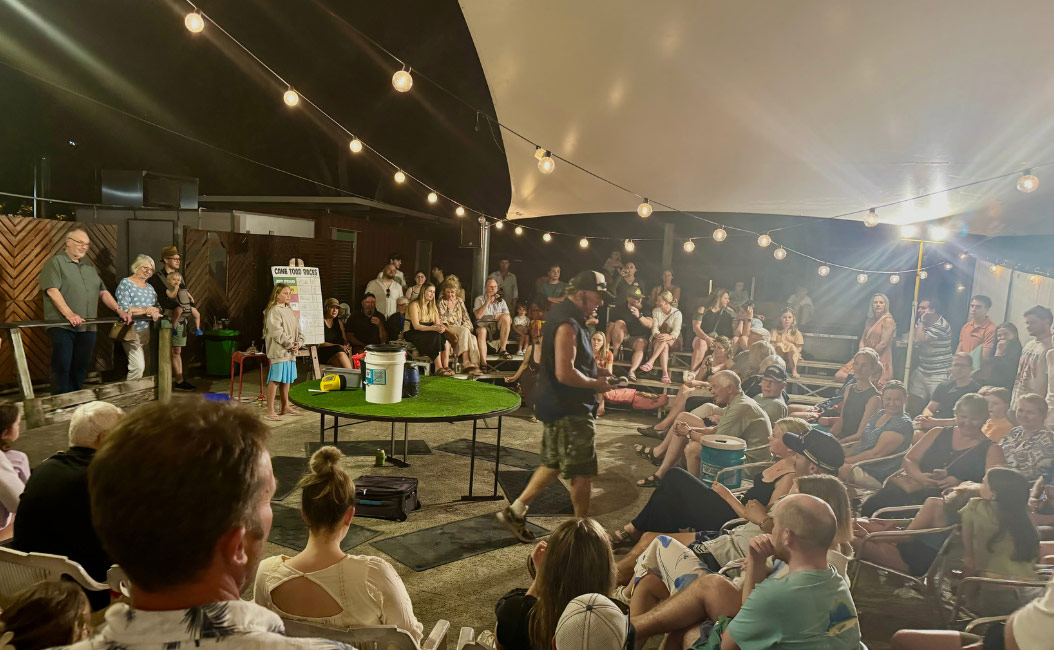
Words & Photography by Rosie Wang
Wandering through Port Douglas, you might hear the roar of a distant crowd on most nights and mistake it for a major sporting event. You will not be wrong - the cheers emanate from the Toad Arena, not a coliseum of gladiatorial bravery, but a place where the laid-back 'gladiators' are cane toads. Here, it's not a fight to the death, but a hop to the finish line (or the edge of the table) that excites the crowd. No bloodshed is needed to make the audience go wild.
This is a typical night in Port Douglas at the Cane Toad Racing, a tradition dating back to 1994. It marks the inception of the first-ever cane toad racing events in Australia, pioneered and established right here in Port Douglas.
If horse racing is known as the ‘sport of kings’, Toad Racing must be the ‘sport of jesters’.
While horses are bred for pedigree and lineage, cane toads are chosen for their availability in the wild, ready to be captured and handled with care, for their moment of stardom.
With the increased popularity of the sport, the venue was moved three years ago from the Iron Bar, to the purpose built Toad Arena, which frequently draws crowds in their couple of hundreds.

